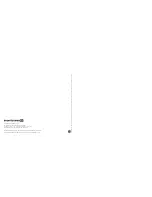
PRODUCT INFORMATION HS 400 Signum / HS 400 Rotor
Thank you for selecting the HS 400 aviation headset. Please take some time to read carefully
through this product information before using the headset.
1.
Safety Information
When using the HS 400 headset, typical aircraft sounds (e.g. those from engines, propellers,
warning alarms etc.) may sound different to you. Before operating the aircraft, please make sure
that you can hear and recognise these sounds. Set the volume to safe levels that do not interfere
with your ability to hear important sounds and warning alarms.
2.
Applications
The HS 400 is an aviation headset which has a closed design to meet high standards. The HS 400
is not TSO approved and therefore it is not suitable for use in commercial aviation.
3.
Usage
3.1
How to store and maintain the HS 400
It is best to store the headset in the supplied padded leather bag. While storing the headset
make sure that it is not exposed to extreme temperatures, humidity or direct sunlight. Use
a soft cloth when cleaning the HS 400. Do not immerse the headset in water.
3.2
How to prepare the Headset for Use
3.2.1 Adjusting the Headband
For best comfort and noise attenuation, the headband has to be adjusted to fit your head
properly.
Wear the headset so that the headband runs over the top of your head and adjust the headband
so that
• your ears are completely enclosed by the ear cushions,
• you feel a gentle pressure around your ears,
• both ends of the headband have the same length to ensure a proper fit
3.2.2 Adjusting the Microphone
• Place the wind shield onto the microphone and make sure that the microphone is completely
enclosed.
• Bend the flexible gooseneck so that the microphone is placed as close as in front of the
middle of your mouth. In order to avoid overstretching and premature wear and tear never
bend the gooseneck more than 90°.
20 | 21
english
• Turn the microphone holder (not the gooseneck!)
to position the microphone on the left or right
hand side of the mouth.
• Adjust the gain of the microphone via a
potentiometer by using the supplied small
screwdriver (refer to the illustration).
• At the factory a high gain has been set. The
gain is reduced by turning the potentiometer
to the left.



































